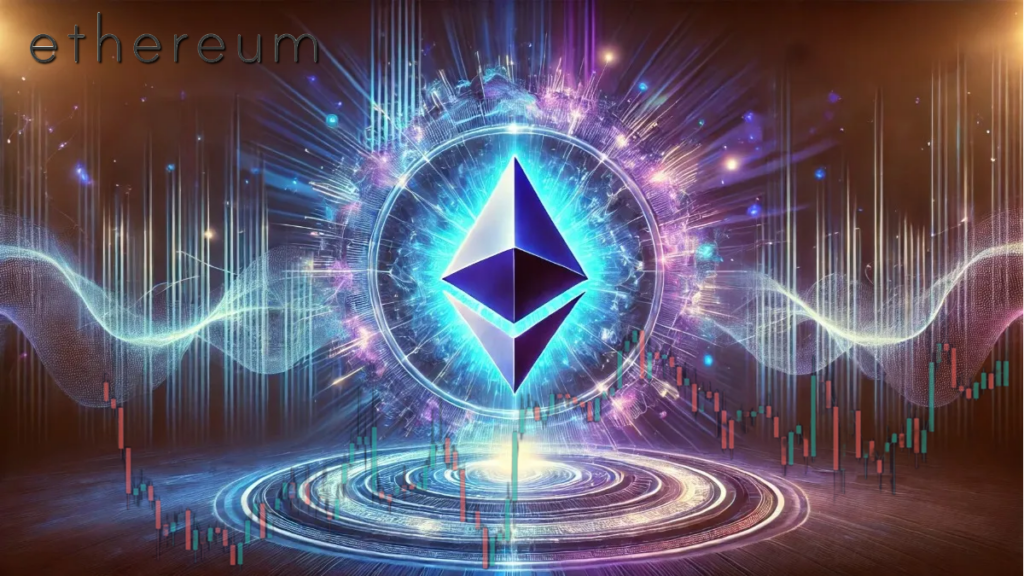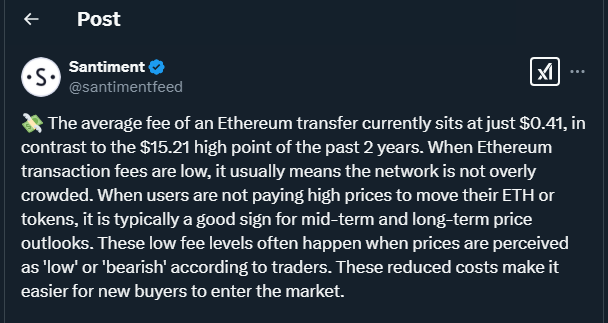TL;DR
- Ethereum network transaction fees have dropped to a historic low of $0.41, representing a 97% reduction compared to the $15.21 recorded over the past two years.
- Lower transaction fees usually indicate a bearish or low-activity market but also pave the way for new investors and increased network utility.
- Despite recent selling pressure, Ethereum has rebounded 4% in the last week, potentially marking the beginning of a bullish recovery.
Ethereum’s transaction fees have dropped dramatically, averaging $0.41 per transaction. This represents a 97% reduction compared to the $15.21 recorded over the past two years. This phenomenon suggests that the network is less congested, which is a positive sign for its scalability and long-term adoption.
The implementation of EIP-1559 and the adoption of layer-2 solutions such as Arbitrum and Optimism have played a key role in reducing fees. These improvements have made Ethereum more efficient, allowing users to conduct transactions at significantly lower costs. Historically, low fees have been seen as an accumulation opportunity for investors looking to enter before a bullish cycle. Additionally, the increased use of these scaling solutions has contributed to an overall improvement in transaction speeds and network responsiveness, making Ethereum more competitive against other blockchain platforms.
The Impact on Adoption and ETH Price
Despite the drop in fees, Ethereum has faced bearish pressure over the past 30 days, with its price declining by 20%. However, in the last week, ETH has shown signs of recovery, gaining 4% and settling around $2,724. This rebound suggests that investors may be reconsidering their position, especially in a context where the network is becoming more accessible and efficient.
On the other hand, a whale movement has caught the market’s attention. A major investor transferred 23,330 ETH (approximately $61.9 million) to Binance at an average price of $2,654, which could be interpreted as a short-term bearish signal. However, data shows that this same wallet previously accumulated 104K ETH at similar prices, indicating that this may be an asset redistribution strategy rather than a total liquidation. The move has led to speculation among traders, with some believing it could signal a larger market shift, while others see it as part of a routine portfolio adjustment.

With low fees and an ecosystem that continues to evolve, Ethereum could be laying the groundwork for a new bullish cycle. As the network continues to address scalability and cost issues, it could attract more users and investors, solidifying its position as the leading platform for smart contracts and decentralized applications. Additionally, the growing adoption of scaling solutions like zk-Rollups and the progress in the Pectra upgrade could further strengthen its competitiveness in the crypto ecosystem.











